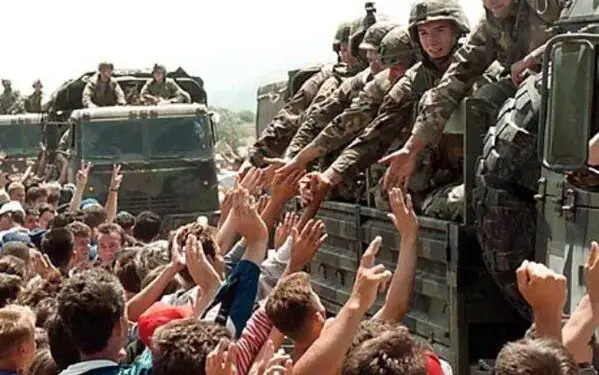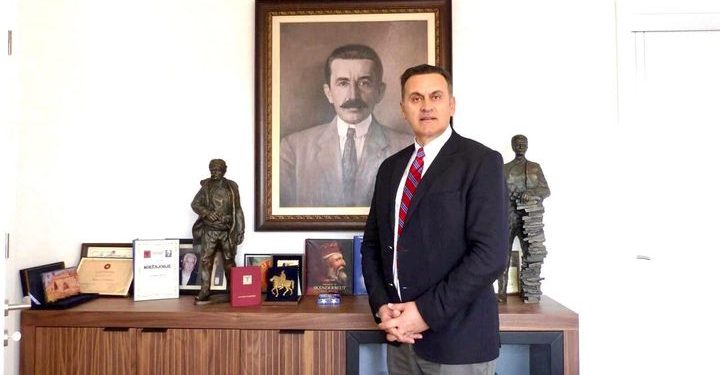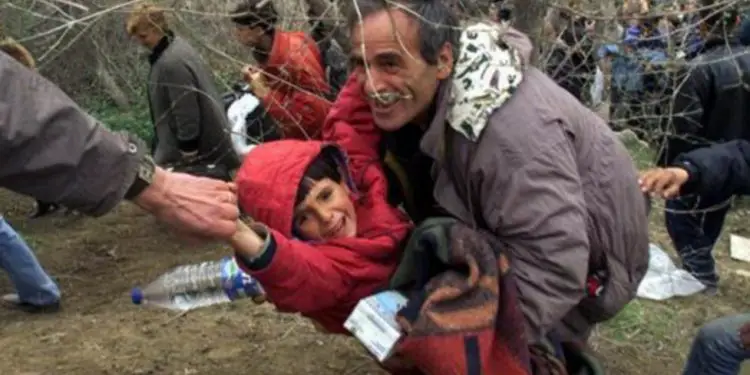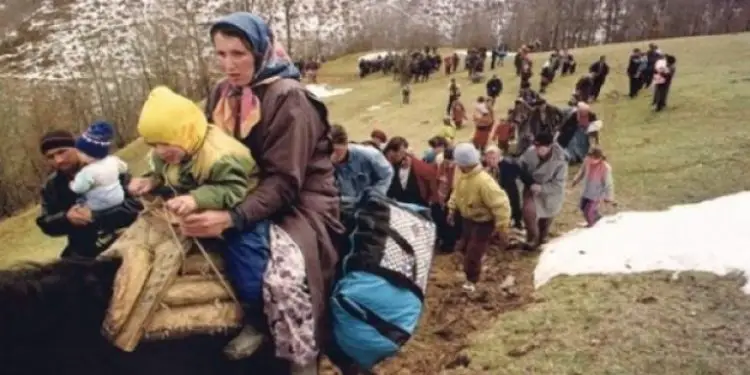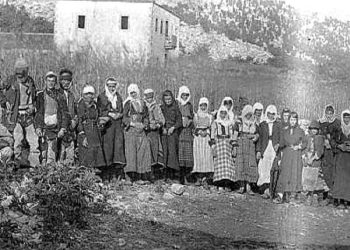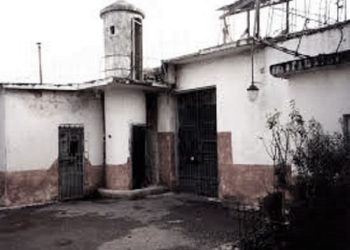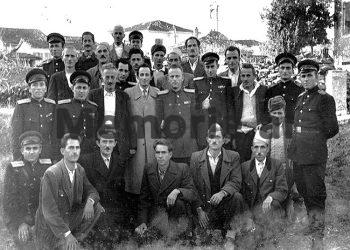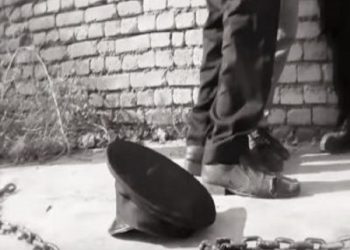By Mehmet PRISTINA
“DEATH SQUADRONS”, A WORK THAT EROSES SERBIAN MURDER CONSCIOUSNESS
Memorie.al/ Bardhyl Mahmuti goes to Serbian territory and there digs up the truth about the crimes committed in Kosovo by the “death squads”. There he discovers, through the mouths of members of Serbian military and police formations, who had witnessed the massacres, but also of Serbian intellectuals and journalists, that the news about the truth was the first victim of every war, but the truth had to be fought for with the means offered by human courage. Not everyone can fight for the truth, so this novel, by placing a Serbian journalist at the center of the narrative, wanted to encourage Serbian society to be more vocal in denouncing the crimes committed by their fellow countrymen.
The novel “DEATH SQUADRONS” (Chronicle of a Slaughterhouse), by the author Bardhyl Mahmuti, is a work that speaks of two sides of the horror in Kosovo – on the one hand, the cruelty of the inhumane side of the Serbian occupying forces is shown, while on the other hand, the conscience and humanity of certain segments of Serbian society (some journalists, soldiers, activists, etc.) are brought to light to testify to the truth of the crimes committed by the Serbian military and police forces during the last war in Kosovo.
At the center of the novel’s plot is the journalist Mifi L., who is also the main narrator in the first person, through whom the nine circles of Dante’s hell unfold, as many parts as the novel has, through which he and his like-minded people had passed.
In Albanian literature, the novel “DEATH SQUADRONS” (Chronicle of a Slaughterhouse), by the author Bardhyl Mahmuti, is one of the few works of art that have so plastically dissected the inner nature of man, in the face of the cruelty that surrounds him, even when that cruelty comes from the people of a nation. The uniqueness of this work lies in the documentary nature of events neatly intertwined according to a well-thought-out literary architecture, where the characters and events have a real relationship with the surrounding world.
Journalist Mifi L., not only witnesses many of the horrors that occurred in Kosovo, but he also becomes the protagonist of a difficult ordeal that he experiences, as a result of his correct professional and humane stances, against the concealment of the crimes that the political, military and police authorities of Serbia tried to commit. He had published dozens of articles, especially in international media, through which he openly denounced the bestial dimensions of Serbian crimes in Kosovo.
The plot of the novel is built precisely on this theme and to facilitate communication with the events and characters, the author has chosen the first-person narrative, which is realized through the mouth of the journalist Mifi L., who, in addition to revealing the testimonies of Serbian soldiers who had participated in the crimes in Kosovo, highlights the consequences of this testimony that he experienced in the form of terrible torture inflicted on him by the officers of the “Red Berets”, in a mountain villa near Vranje (in the village of Bela Voda).
This is due to the fact that journalist Mifi L. had written precisely about the monstrosities of this paramilitary formation, which, although operating within the framework of regular Serbian forces, was known for extremely savage and barbaric actions against Albanian civilians, where neither infants, nor pregnant women, nor the elderly were spared, who either ended up in the bayonets of the “Red Berets”, or their bodies were reduced to ashes.
Journalist Mifi L., in his writings, had also published evidence about the burning of corpses in the aluminum foundry in Maçkatica, Surdulica municipality, but also in other foundries in Serbia and Kosovo. The burning of corpses in these foundries, as we learn in the novel, was carried out by the “Red Berets”, a formation that was later merged and transferred to a special unit within the Serbian Ministry of Interior.
Writing about all these crimes was a great courage and bravery, but it was also a great moral test to face death, even when journalist Mifi L. categorically refuses to deny what he had written, as a condition for being released from criminal prosecution, which meant tens of years in prison.
The concealment of traces of crimes in Kosovo constituted one of the main pillars of Serbia’s fascist doctrine, but such an attempt proved unsuccessful, because it was international organizations and courageous journalists, such as Mifi L., who had denounced this doctrine. To illustrate this, the author also brings a reaction from the International Criminal Tribunal for the Former Yugoslavia, which, through the Deputy Prosecutor General of this court, Graham Blue, exposed Serbia’s efforts to conceal traces of crimes:
“Evidence of the existence of a plan and intent to destroy traces of crimes committed against Albanians in Kosovo is evidence of the prior existence of a plan and intent to commit these crimes,” the International Criminal Tribunal for the Former Yugoslavia said in its reaction. This was the double crime that Serbia committed, exhuming the bodies of the murdered Albanians and burying them in mass graves in Serbia.
But Bardhyl Mahmut’s novel teaches us that the blood of innocent victims cannot be hidden as easily as the creators of the Serbian Holocaust had thought. The entire plot of this work is woven around this thematic axis. Despite the camouflage measures that the Serbian Milošević regime had undertaken, the truth about Serbian crimes could not be kept isolated, much less unpublished. This truth comes out of the ground, it cannot be held by the ground, but also by many wells, filled with victims, who had been forbidden to live, because this was how it was planned by the strategists of death in Belgrade. All of this was called “cleaning up the battlefields”.
In this novel we see that the truth about the crime is not held by the ground, but rather brought to the surface. This truth is spoken by those whose consciences are tormented by the horrors they caused in Kosovo. There are several characters who speak as participants in war crimes in Kosovo, such as Rade, a soldier who fought in Kosovo, who, unable to bear the weight of guilt for what had happened in Kosovo, committed suicide. In a conversation with journalist Mifi L., he told the latter about a conversation he had with his psychiatrist:
“…the dead linger in my soul. Especially those we have exhumed, whose bones we have decomposed and left without a grave. Do you know what that living animal told me? Suffering for the dead is meaningless, so get your mind off them! The dead with the dead, the living with the living!… I couldn’t stand it any longer! I got up from my chair and, before slamming the door, I told him that they weren’t dead, but that we killed them in their homes”!
The novel also reveals another dimension of Serbia’s invasion strategy, which was intensified through a dirty disinformation war. We also understand this from the accounts of the soldiers who had participated in the crimes, but without knowing the truth about what had happened. They had been told that “Albanian terrorists” had massacred Serbian women and children, and driven by a thirst for revenge, they had rushed to Albanian settlements in Kosovo, where they had committed the most monstrous crimes.
To explain the effects of this dirty disinformation war, the author brings the story of a Serbian soldier who had been in a tank unit, as a vanguard of the massacres that the Serbian military and police forces had committed in the homes of Albanians.
“However, I was constantly firing tanks towards Albanian villages, because I was told that the civilians had left and that there were only terrorists in the houses, who had killed and burned Serbian civilians…! Later I understood the truth…”! And the truth was very harsh, because it was being camouflaged to create an alibi for the massacres, although the Serbian soldiers later realized that they had been manipulated, that the target of their attacks had not been the uniformed members of the KLA, but the defenseless Albanian civilians.
Later it was also understood that the massacre in the “Panda” café in Peja, where several young Serbs were killed and wounded, was not carried out by Albanians, but by members of the “Red Berets”, on orders from above. Later, as we learn from this novel, it was understood that the bombs that were dropped on the columns of fleeing civilians, but also on the Dubrava prison, did not come from NATO planes, as was said in the propaganda kitchens of Belgrade, but from Serbian planes, which were sheltered in the underground airport of Goleš.
Bardhyl Mahmuti goes to Serbian territory and there digs up the truth about the crimes committed in Kosovo by the “death squads”. There, he reveals, through the mouths of members of the Serbian military and police formations, who had witnessed the massacres, but also of Serbian intellectuals and journalists, that the news about the truth was the first victim of every war, but the truth had to be fought for with the means offered by human courage.
Not everyone can fight for the truth, so this novel, by placing a Serbian journalist at the center of the narrative, wanted to encourage Serbian society to be more vocal in denouncing the crimes committed by their fellow countrymen. And this, I believe, will have the greatest effect if this novel is translated into Serbian, because it is dedicated precisely to Serbs and especially to those who need to learn the naked truth about what happened. Serbs need to confront the evil they have in their midst and this can only be achieved if most of them follow the example of journalist Mifi L. and some of his colleagues. Memorie.al




